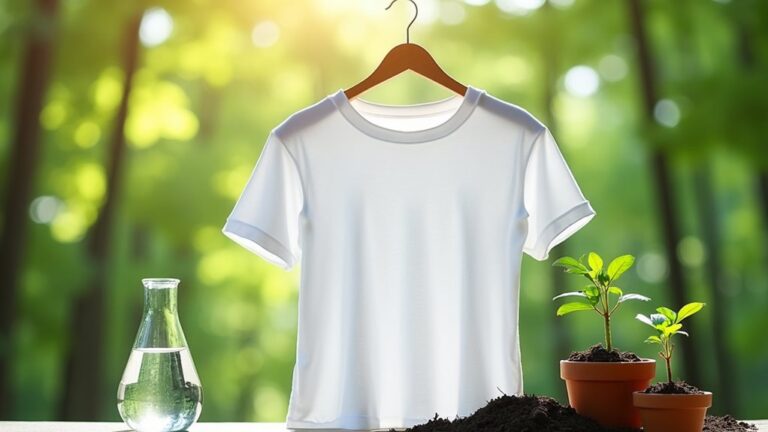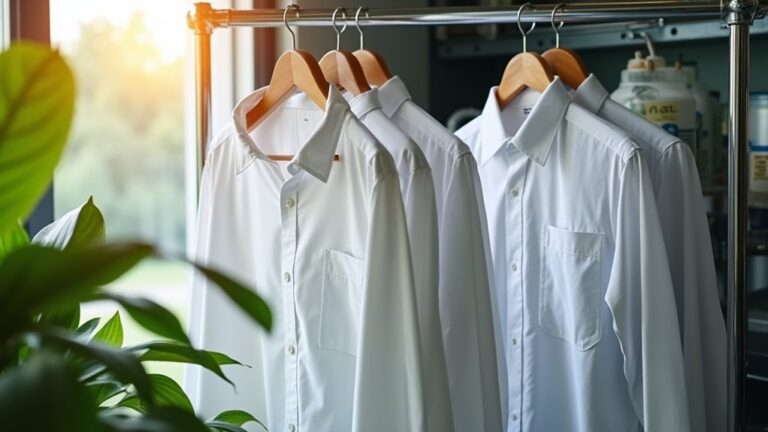You’ll find seven main types of dry cleaning methods available today, ranging from traditional perchloroethylene-based cleaning that’s been around since the 1930s, to modern eco-friendly alternatives like supercritical CO2 technology and biodegradable hydrocarbon solvents. Each method serves different fabric needs and environmental concerns, from specialty treatments for delicate silks and cashmeres to professional wet cleaning systems that use controlled moisture instead of harsh chemicals—and understanding these options will help you make smarter choices for your garments.
Traditional Perchloroethylene-Based Dry Cleaning
For decades, perchloroethylene has been the backbone of traditional dry cleaning, and honestly, there’s a good reason why your neighborhood cleaner has relied on this powerful solvent since the 1930s.
You’ve probably noticed how perc effortlessly tackles those stubborn grease stains that make you cringe – the ones from your favorite pasta dinner or that unfortunate encounter with salad dressing. This cleaning process works because perchloroethylene is thermally stable, nonflammable, and incredibly effective at dissolving oils that water simply can’t touch.
What’s particularly impressive is that modern dry cleaners recover about 99.99% of the solvent during each cycle, making it surprisingly efficient.
Modern dry cleaning operations achieve remarkable 99.99% solvent recovery rates, demonstrating impressive efficiency in their cleaning cycles.
This chlorinated hydrocarbon is especially valuable for cleaning delicate fabrics like silk and wool that require gentle treatment.
However, you should know that health concerns are prompting the industry to explore safer alternatives to this traditional dry cleaning method.
Eco-Friendly Hydrocarbon Solvent Methods

While traditional perc has dominated the dry cleaning environment for nearly a century, eco-friendly hydrocarbon solvent methods are quietly revolutionizing how we think about garment care, and frankly, it’s about time.
You’ll find these biodegradable cleaning agents remarkably gentler on your favorite fabrics, maintaining that vibrant color and soft texture you love while effectively tackling stubborn stains.
I’ve watched countless clients marvel at how their garments emerge from professional dry cleaning looking refreshed rather than slightly dulled.
These naturally-derived solvents evaporate quickly, leaving virtually no residue behind—a stark contrast to harsher chemicals.
When you’re choosing eco-friendly options, you’re not sacrificing quality; you’re investing in both your wardrobe’s longevity and environmental responsibility. 🌱
Unlike traditional methods that create groundwater contamination risks, these eco-friendly alternatives significantly reduce environmental hazards while maintaining superior cleaning performance.
Green Alternative Cleaning Solutions

Beyond these promising hydrocarbon alternatives, you’ll discover an even broader spectrum of green cleaning solutions that’s honestly changing everything I thought I knew about fabric care.
Eco-friendly dry cleaning solutions now include liquid CO2 cleaning, which uses carbon dioxide in its liquid state to remove stains without toxic exposure – it’s like magic, but actually science! 🧪
Revolutionary liquid CO2 cleaning harnesses pure science to eliminate stains without a single toxic chemical – it’s genuinely transformative! 🧪
Water-based cleaning methods have evolved dramatically too, and I’ve watched delicate silk blouses emerge from wet cleaning processes looking absolutely pristine.
These innovations prove you don’t need harsh chemicals to achieve professional results. The industry’s embracing these alternatives because they’re safer for workers, gentler on fabrics, and kinder to our planet – honestly, it’s invigorating to see environmental responsibility finally catching up with effectiveness.
Another innovative option gaining popularity is liquid silicone cleaning, which provides effective stain removal while being both environmentally safe and gentle on delicate fabrics.
Specialty Fabric Treatment Services
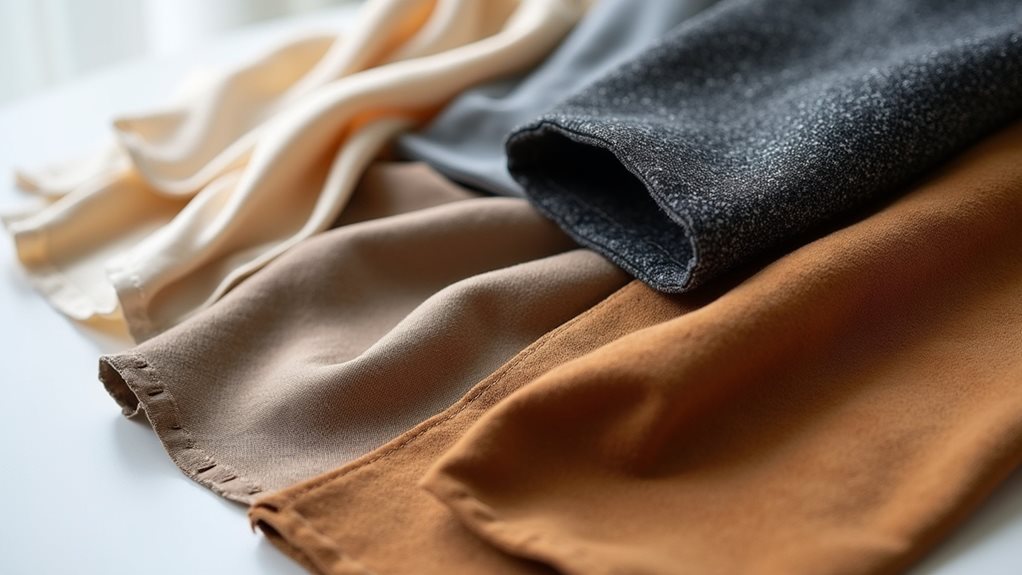
Three years ago, I learned the hard way that not all dry cleaners understand the delicate dance required for specialty fabrics when my beloved cashmere sweater came back looking like it had survived a tornado.
That’s when I discovered specialty fabric treatment services, which focus on the unique needs of materials like silk, wool, and cashmere.
These experts know that the cleaning process involves specific techniques designed to preserve your precious garments.
Here’s what sets them apart:
- Professional fabric identification and appropriate care methods
- Eco-friendly solvents that protect both fabrics and environment
- Specialized stain treatment for high-end materials
- Bespoke care for wedding dresses and formal wear
Unlike traditional washing methods, these specialty services use chemical solvents that effectively dissolve oils and grease while preventing shrinkage and color bleeding.
You’ll find these services invaluable for maintaining your investment pieces!
Business Categories by Quality and Pricing
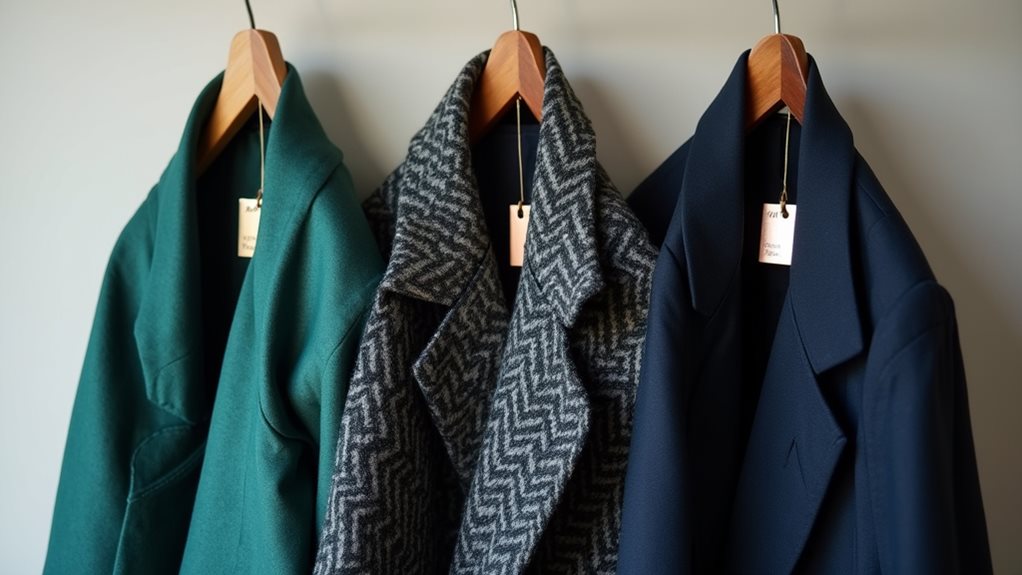
Now that you understand how specialty services can save your most treasured pieces, you’ll want to know how to identify which type of dry cleaner you’re actually walking into, because trust me, they’re definitely not all created equal.
You’ve got four main categories based on quality and pricing, and each one tells you exactly what you’re gonna get.
Value cleaners use high-volume processing to keep costs low, but you’ll sacrifice quality – think assembly line mentality.
Ordinary cleaners sit in the middle, trying to please everyone but understanding no one’s actual needs.
Wannabe cleaners? They’re the worst – charging premium prices while delivering mediocre results with fancy marketing.
Extraordinary cleaners use skilled labor and specialized equipment, delivering consistently superior dry cleaning services.
For professionals who wear formal wear regularly or own expensive garments, choosing the right category becomes essential rather than just a luxury.
Professional Service Delivery Models
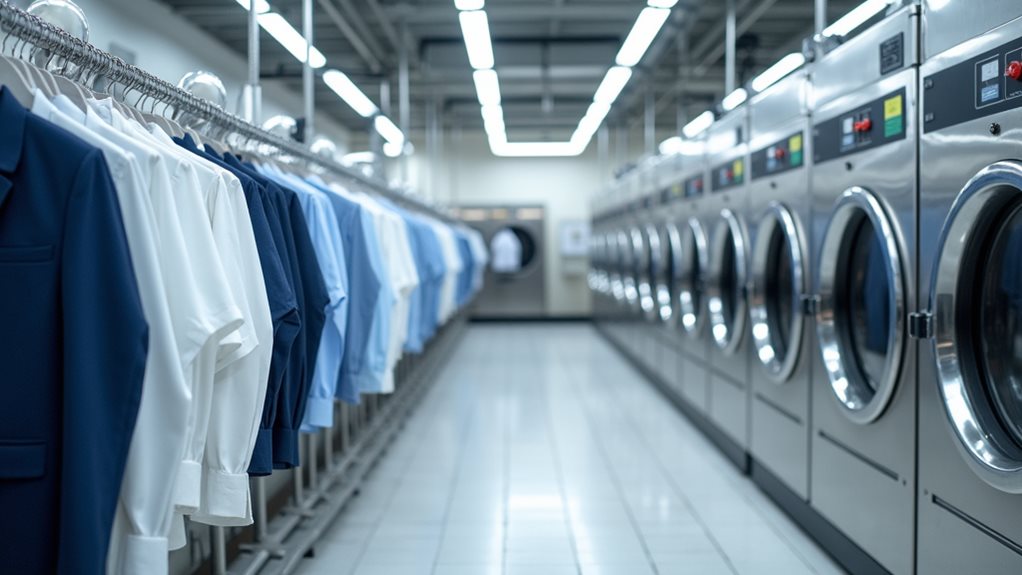
The way your dry cleaner actually operates behind those swinging doors matters more than the fancy storefront they’ve decorated, because delivery models reveal everything about their commitment to your clothes.
These types of professional service delivery models shape your entire dry cleaning experience, and honestly, I’ve learned this lesson the hard way after ruining my favorite blazer at a place with gorgeous marble counters but zero skill.
Here’s what you’ll encounter:
- Premium full-service operations that hand-press every garment and treat stains individually
- Standard conveyor-belt systems that process clothes in batches with minimal customization
- Express volume facilities focused on speed over precision cleaning techniques
- Hybrid models combining automated processing with selective hand-finishing for special pieces
The choice of specialized solvents used in each facility’s cleaning process also varies significantly, with some using traditional perchloroethylene while others opt for eco-friendly alternatives like hydrocarbon or liquid CO2.
Understanding these differences helps you choose wisely!
Advanced Solvent Technologies and Innovations
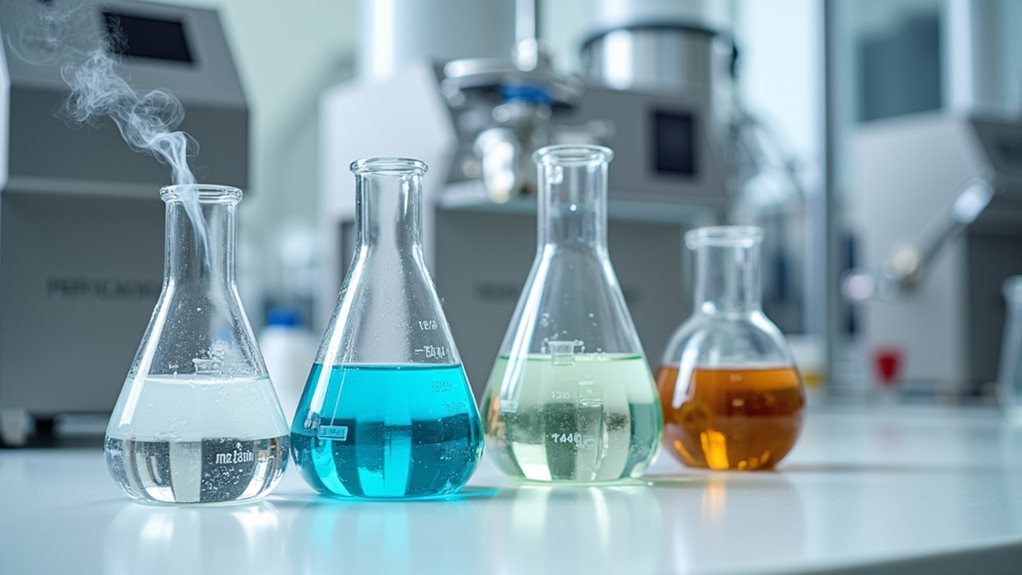
You’re probably thinking traditional dry cleaning solvents are your only option, but honestly, I used to believe that too until I discovered the incredible world of advanced cleaning technologies that are revolutionizing how we care for our precious garments.
Today’s eco-friendly solvent alternatives, like supercritical CO2 technology, work almost like magic—imagine carbon dioxide transforming into a powerful cleaning agent that’s gentler than a whisper on your favorite silk blouse while being kinder to our planet than anything I’ve seen in my years of fabric care.
These innovative siloxane-based cleaning systems have completely changed my perspective on what’s possible, offering stain-fighting power that rivals traditional methods without the harsh chemicals that used to make me worry about my family’s health every time I picked up dry cleaning.
Professional wet cleaning systems represent another breakthrough innovation, using specialized detergents and controlled moisture to achieve exceptional results on delicate fabrics that traditionally required solvent-based cleaning.
Eco-Friendly Solvent Alternatives
As environmental concerns reshape entire industries, dry cleaning has quietly undergone one of its most dramatic transformations, embracing eco-friendly solvent alternatives that would’ve seemed like science fiction just decades ago.
You’ll find these biodegradable solvents aren’t just better for our planet—they’re actually gentler on your favorite silk blouse or wool coat, preventing that heartbreaking color bleeding we’ve all experienced.
Today’s non-toxic options include:
- Liquid CO2 – Uses carbon dioxide in liquid state for chemical-free cleaning
- High-flashpoint hydrocarbons – Safer petroleum-based alternatives with reduced toxicity
- Glycol ethers – Plant-derived solvents that maintain fabric integrity
- Supercritical CO2 – Advanced technology combining effectiveness with environmental responsibility
These innovations prove you don’t have to sacrifice quality for sustainability, and honestly, your clothes will thank you for it! 😊
The dry cleaning industry’s gradual shift away from perchloroethylene toward these safer alternatives demonstrates how modern technology can maintain the same level of garment care while addressing health and environmental concerns.
Supercritical CO2 Technology
Among these revolutionary alternatives, supercritical CO2 technology stands as perhaps the most fascinating innovation I’ve encountered in my years following the dry cleaning industry, transforming ordinary carbon dioxide into what I can only describe as a “super solvent” that behaves like both a liquid and gas simultaneously.
This brilliant dry cleaning process operates at lower temperatures than traditional methods, which means your delicate silk blouses and wool sweaters won’t suffer the heartbreak of shrinking or distortion.
What truly excites me about this cleaning method is how it tackles stubborn oil stains while maintaining fabric integrity and vibrant colors.
As an eco-friendly alternative, it’s completely non-toxic and recyclable, making it the sustainable future I’d recommend for conscious consumers.
While traditional dry cleaning operations have long relied on petroleum-based solvents like perchloroethylene for their proven cleaning efficacy, the industry continues to evolve toward more environmentally conscious alternatives.
Siloxane-Based Cleaning Systems
While supercritical CO2 technology impressed me with its dual-phase behavior, siloxane-based cleaning systems have quietly revolutionized the industry through their remarkable molecular structure, particularly decamethylcyclopentasiloxane (D5), which sounds intimidatingly scientific but works like magic on your favorite garments.
These siloxane-based cleaning systems represent genuine eco-friendly alternatives that’ll make you feel good about maintaining your wardrobe responsibly.
Here’s why they’re effective in removing stubborn stains:
- Non-toxic formulation means safer handling for workers and customers
- Low volatility reduces harmful emissions during cleaning cycles
- Lower temperature operation cuts energy consumption considerably
- Excellent grease dissolution tackles oils without fabric damage
I’ve watched these systems transform delicate silk blouses and wool suits with gentle precision, proving that environmental consciousness doesn’t require sacrificing cleaning quality 🌱



